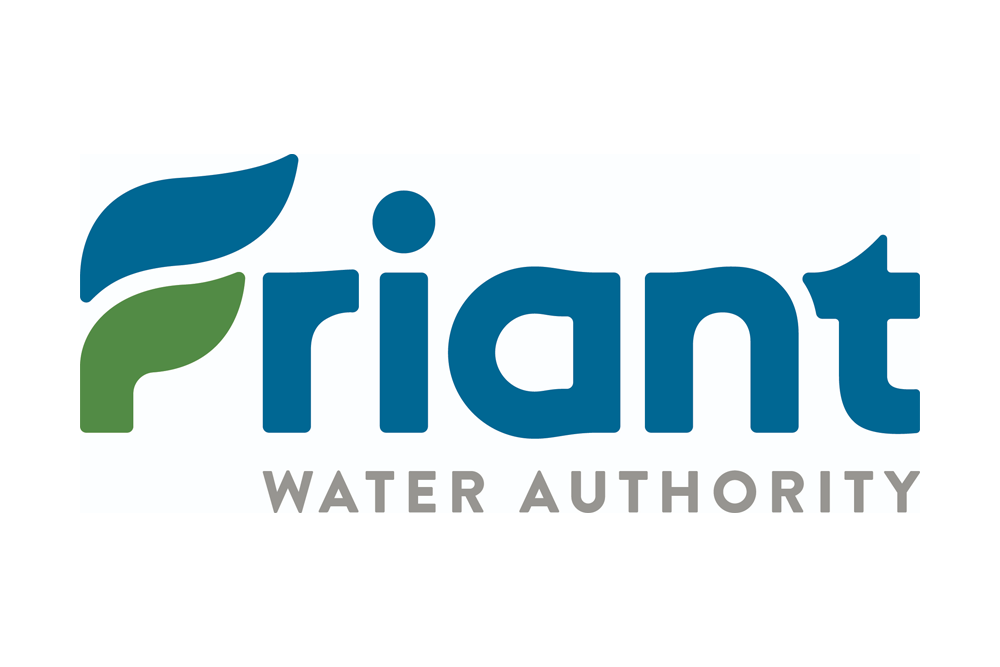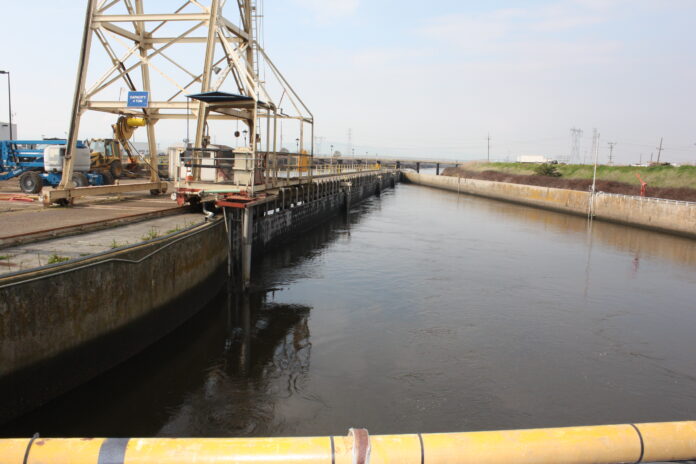The Exchange Contractors board of directors met on Friday, June 2, 2023 at its Los Banos headquarters and by telephone (a notice on the agenda states all members of the public are asked to attend the meeting by conference call). While waiting for the meeting to begin I want to remind you the Delta View Water Association’s annual membership meeting is on Wednesday, June 7th from 10:30am to 1:00pm at the DG Bar Ranch between Hanford and Visalia. Here’s a link to RSVP.
is on Wednesday, June 7th from 10:30am to 1:00pm at the DG Bar Ranch between Hanford and Visalia. Here’s a link to RSVP.
It is also important for you and any organization you may be familiar with to join the fight to preserve property rights (it’s insane we have to do this in America) from the state takeover of water rights. For more information go here.
While we continue to wait for the host to arrive and the telephone conference to begin I noticed the name of the company playing the endless loop of ear pudding, smooth jazz is called Broad Dana. That seems rude in some ways. Is Dana a broad and not a lady? Is Dana a man or woman for that matter? I would think it’s a bad nickname for a girl but if a guy is an offensive lineman then it might be a good moniker. I didn’t bother to Google the company and find out.
The Meeting
The meeting was called to order at 9:00am on the dot and Chairman Chris Cardella instigated the Flag Salute, like any government meeting to begin things right. There were no changes to the agenda, conflicts of interest and the minutes were approved. Executive Director Chris White asked those online to introduce ourselves and there wasn’t many of us, less than usual anyway.
The glamorous Joann White, gave the board the straight skinny on what they’re spending and the board said pay for it. She then gave the financial reports and they were approved as well.
Water Report
Water Master Adam Hoffman gave his report saying Ex Con has a 2,200 cfs demand as of today but tracking behind 2017. The Kings River is still releasing 4,750 cfs and the south fork releases are ramping down, at 800cfs – less than half from the April high.
The San Joaquin River flows have exceeded channel capacity in some places. There have been problems with the high flows and the levees at the By Pass. Releases to the river at Friant Dam will be reduced to 9,000 cfs. I believe I heard Hoffman say there’s 2,500 cfs entering the Mendota Pool. He expects flood releases into July.
Shasta is full but just about all if not all the Sacramento Valley reservoirs are ramping down flood releases and transitioning to demand releases. San Luis Reservoir is full and the pumps are running at maximum. Lake Millerton and Pine Flat are the only major reservoirs not full as they have been dealing with flood releases. There is 77,000 cfs flowing into the Delta and 65,000 cfs flowing out to sea. Hoffman said the snowpack on the San Joaquin River watershed may not completely melt this year. There’s that much still in the high country.
Delta and 65,000 cfs flowing out to sea. Hoffman said the snowpack on the San Joaquin River watershed may not completely melt this year. There’s that much still in the high country.
Ex Directors Report
Next White said there has been a lot of work on the state side of legislation and some SGMA groundwater efforts. There is a GSA partners meeting scheduled for June 12th to help the disadvantaged communities and the white area folks to work towards goals. There are a lot of players in the subbasin and Central California Irrigation District General Manager Jarrett Martin and John Wiersma GM San Luis Canal Company will be running the program. Martin said he expects a June 20th State Board meeting with direction to staff to start the 90-day probation period for the subbasins with incomplete Groundwater Sustainability Plans. The State Board has said it doesn’t want to deal with all six subbasins that have incomplete GSPs at the same time. SGMA is new to everyone. Martin said he expects ACWA to be at the State Board to help as this could be a very complicated process.
Wiersma said this is a time to be as involved as you can be. He said public and partnership participation is going well. The fines are $300 per well and $40 per acre foot of water over pumped under SGMA. It looks like the State Board will send letters to the landowners who will have to register their wells to the SGMA portal or face fines. That will start the 90-day period for the State Board to start the public hearing on probation. Martin said once the State Board finds a subbasin in probation there will be 12 monthly reports due and at the end of that time the fines and other penalties are going to be imposed.
State Board finds a subbasin in probation there will be 12 monthly reports due and at the end of that time the fines and other penalties are going to be imposed.
Martin and Wiersma said the primary goal is to get the subbasin’s GSP in compliance. Martin said the biggest thing to clear up is the process. Trying to get multiple plans in a subbasin coordinated into one is a challenge for DWR staff and it isn’t DWR’s fault. These GSPs are massive documents. Martin said the GSAs need to pivot from working with DWR to the State Board staff. Key to this process is how SGMA is being interpreted as law. There isn’t a definite checklist for anyone to follow.
Jeff Bryant, GM Firebaugh Canal Water District asked about the State Board’s staff ability to recognize the upper and lower aquifer. There is a clay layer under much of the westside of the San Joaquin Valley that can cause high groundwater levels and some of that has water quality issues.
White said yesterday morning a 30 percent design was signed off on Del Puerto Canyon Reservoir and there will be a workshop later this month. Good news.
Policy & Programs
Steve Chedester, Director of Policy said there is still a delay from the US Bureau of Reclamation on the 60 percent design on parts of the San Joaquin River restoration project. There are some operation discussions but there isn’t anything new on the Reach 2B progress to be mentioned.
Next Chedester gave the Orestimba Creek update. He said there was a good meeting with the Bureau last week to go over the documents and they may be able to contract for the work sooner than expected, by mid-month even. He said there is still a $1 million federal grant pending. The archeological report is ready and things are moving ahead well. The NEPA and CEQA drafts are under review and that could be wrapped by sometime in July.
He said the Los Banos Creek recharge project is moving slow, but moving.
Water Transfers
White said the indemnification agreement has been circulated to the home boards and approval as written is the staff recommendation. The board agreed.
Gov’t Mischief
Dave Cory said everyone is waiting on some Central Valley Regional Water Quality Control Board clarification on the water quality involving nitrates. He reminded all the landowners to fill out the necessary documentation to say off the bad boys list. Two Regional Board members have resigned and they are going to be difficult to replace. There are five out of seven members now with four from Sacramento and one from the South Valley. It’s not easy to find good folks to sit on this board as it is largely thankless and time consuming. Cory said Regional Board staff is pretty good and hopes the new board members will listen to staff and some continuity can be maintained. Board members are regulators, unelected, appointed and asked to take on a never ending task.
members will listen to staff and some continuity can be maintained. Board members are regulators, unelected, appointed and asked to take on a never ending task.
It would be so much more transparent and effective to have the State Board comprised of elected representatives from each of the Regional Boards and the Regional boards appointed by the counties they overlay. There was a time I’ve been told, when the state senate boundaries coincided with county lines. Can you imagine how much of the current troubles facing California could be avoided? For one thing it would cut the Bay Area/Sacramento policy dominance and one party super majorities.
Legislative Report
The AB 460 and AB 1337 pending laws have been heavily lobbied in opposition but made it out of the Assembly and are now moving through the Senate. White said there is hope this will be a better space to fight this. The opposition isn’t just ag or the Valley but statewide and includes industry, labor, financing and municipal interests.
On the federal side USBR spending has some money for Del Puerto Canyon and there is fed bucks to help with the Colorado River. There is a bill by John Duarte that looks good, sorry I couldn’t get the info. I didn’t hear which one. Senator Diane Feinstein approached Ex Con on some proposed legislation. Chedester said there are hundreds of millions of dollars for major conveyance infrastructure repairs. The WIIN Act is still doing good things and Feinstein is also putting forth a bill to help with aging infrastructure. It also allows if a new definition of beneficiary can be added then DACs and tribes can be included. Including this will save 15-percent off the bill. These Feinstein bills are so new there aren’t any numbers yet.
Randy Houk, GM Columbia Canal Company pointed out the multi-billion-dollar Prop One water storage funding passed in 2014 has only spent $500 million to help tear down some dams on the Klamath River.
Attorney Report
In groundwater matters, litigation over the outdated GSP being challenged is still somehow alive. Attorney Andy McClure is angling for a dismissal. The appeal by some Friant contractors over Del Puerto Dam isn’t going anywhere this year but the Sierra Club suit will have a hearing in Fresno June 15th for a settlement. The judge said don’t show up with unreasonable demands.
The Delta bio ops abandoned by the Biden Administration has led to a re-consultation. This includes a proposal to shrink the storage space for ag and increase it for the environmental releases in existing reservoirs. Once again the goal has been moved – the new goal is to increase the species populations.
Manager’s Reports & Informational
Next, Houk reported deliveries are picking up. There was a shareholder’s meeting and the same directors were reelected. There was a discussion on liability issues for Ex Con. There are some seepage problems near the Bypass and that has resulted in some flooding. The City of Firebaugh sandbagged the SJR and that held.
Bryant said there is a solar project starting in the next couple of weeks to energize the four FCWD pump stations. Fortunately for Firebaugh Canal the new equipment fits with existing PG&E standards.
Wiersma said the budget was approved and construction projects are starting. Some new gates have been approved and design modifications are underway. The gates could be in by the end of the year and measure flows.
Martin said demands are picking up and aquatic weeds are popping up again. The seepage impacts are being closely watched. There is a coalition putting together resource conservation investments to recharge natural habitat and get credits and mitigation banks. The credits could be used for future projects. This sounds promising and the engineering firm ESA (not the law) is running this.
The Mendota Pool dewatering date has not been set yet and Martin thinks the need for an additional permit isn’t needed. But he has a goal for after Thanksgiving. The Kings River system will mostly likely be on the bubble for a flood release and that has to be watched carefully.
Houk said the SJR restoration program, due to the Kings River running, should see what seepage is actually taking place. This is a chance to see real conditions instead of just giving estimates.
White reported the RFP has been sent out to hire federal lobbyists.
Closed Session
The meeting went into closed session at 10:21am California time to jaw about seven legal cases. And that was that. Go be good to yourself and each other.
DISCLAIMER OF RESPONSIBILITY; Waterwrights.net strives to provide its clients with the most complete, up-to-date, and accurate information available. Nevertheless, Waterwrights.net does not serve as a guarantor of the accuracy or completeness of the information provided, and specifically disclaims any and all responsibility for information that is not accurate, up-to-date, or complete. Waterwrights.net’s clients therefore rely on the accuracy, completeness and timeliness of information from DAW entirely at their own risk. The opinions expressed in this report are those of the author and do not represent any advertisers or third parties.
ALL RIGHTS RESERVED. Copyright 2023 by WaterWrights.net/DAW
SAN JOAQUIN RIVER EXCHANGE CONTRACTORS WATER AUTHORITY
Main Office: 541 H Street, P.O. Box 2115 Los Banos, CA 93653 Office 209/827-8616 www.sjrecwa.net Email: contactus@sjrecwa.net
DWR SGMA Identifier #5-022.07
The Exchange Contractors cover almost a quarter of a million acres in Fresno, Madera, Merced and Stanislaus Counties.
Mission Statement
The Exchange Contractors Water Authority mission is to effectively protect the Exchange Contract and maximize local water supply, flexibility and redundancy in order to maintain local control over the members’ water supply.
Board
Chris Cardella -Chair Columbia Canal Company, Mike Stearns-Vice Chair Director Firebaugh Canal Water District, James L. Nickel-Treasurer San Luis Canal Company, Eric Fontana- Director Central California Irrigation District
Staff
Chris White-Executive Director, Steve Chedester- Director Policies & Programs, Adam Hoffman-Water Resources Specialist, Joann White-Director Finance and Human Resources, Darlene O’Brien- Administrative Assistant, Andy McClure-Attorney Minasian Law Firm.
History
From the Exchange Contractors’ website: www.sjrecwa.net The San Joaquin River Exchange Contractors hold some of the oldest water rights in the state, dating back to the late 1800s. The rights were established by Henry Miller of the legendary Miller and Lux cattle empire. In 1871, Henry Miller constructed canals to divert water from the San Joaquin and North Fork of the Kings Rivers for irrigation of his vast acreage. Today, several of the original Miller and Lux canals are operated by the Exchange Contractors.
Although Henry Miller’s canals served the irrigation needs of his estate in the western portion of Fresno, Madera, Merced, and Stanislaus counties, in order for more growth on the east side of the San Joaquin Valley to occur, more water was needed. In 1933, the United States Department of Interior undertook the Central Valley Project, a vast undertaking to build dams throughout the great Central Valley including the Sacramento, American and San Joaquin Rivers. When construction of the Friant Dam (north of Fresno) was under consideration, feasibility studies showed that irrigation development of the Friant Project between Chowchilla and Bakersfield depended upon water being diverted from the San Joaquin River at Friant Dam and brought to the east side of the valley, via the Friant-Kern Canal.
To accomplish this, the government asked the heirs of Miller and Lux to agree to “exchange” where they receive their pre-1914 appropriative and riparian water from the San Joaquin and Kings Rivers for guaranteed deliveries of “substitute” water from the Sacramento River by means of the Delta-Mendota Canal and other facilities of the United States. This agreement, known as the “Exchange Contract,” along with the accompanying “Purchase Contract,” were reached in 1939 and that led to the name “San Joaquin River Exchange Contractors.” In normal years, the Exchange Contractors are guaranteed 100% of their contractual water allotment (840,000 acre feet) and in critical years the amount is 75% (650,000 a/f).
The Exchange Contractors, however, did not abandon their San Joaquin River water rights. Instead, they agreed not to exercise those San Joaquin and Kings Rivers’ water rights if guaranteed water deliveries continued through the Delta-Mendota Canal or other facilities of the United States.


































